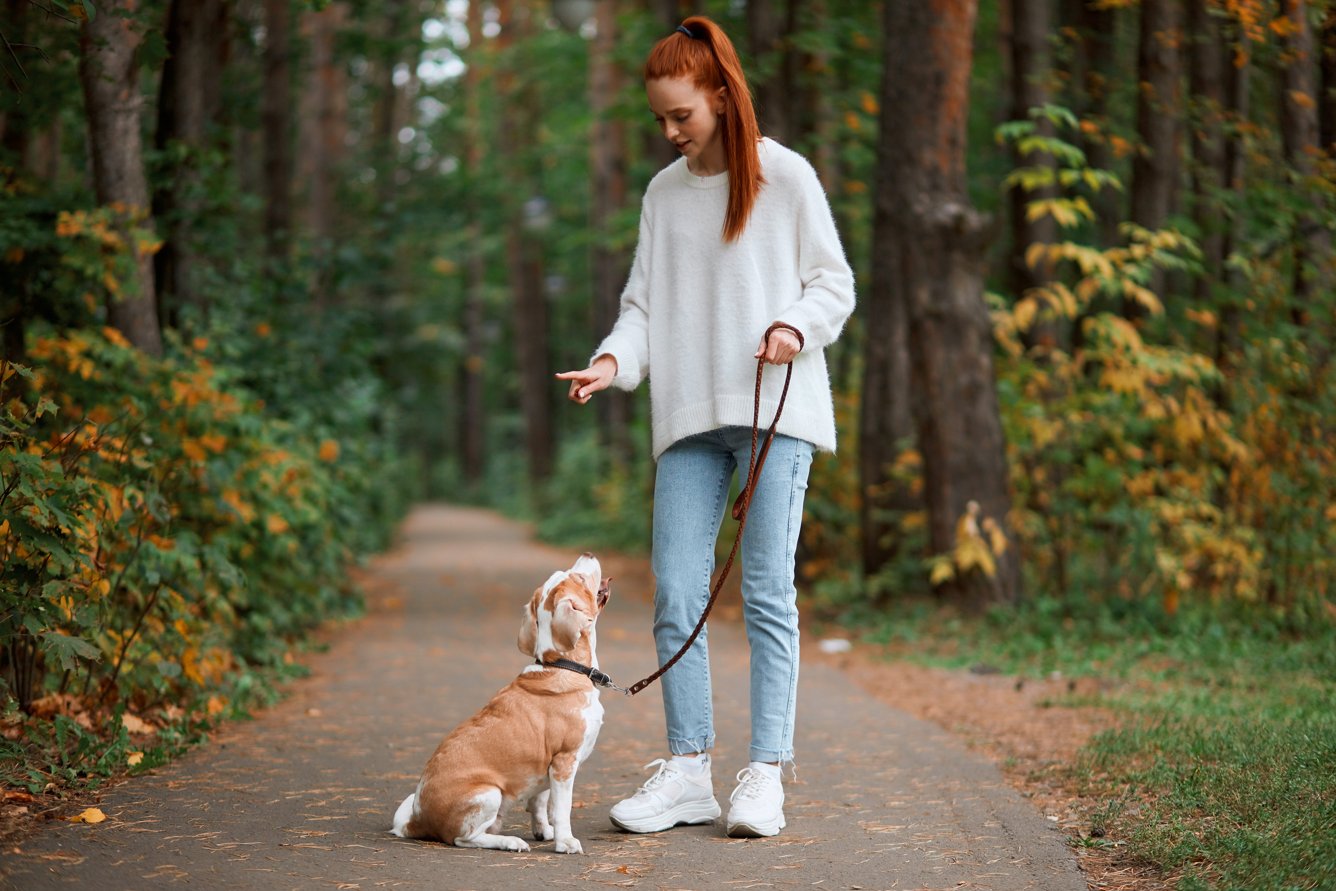Walks should be a source of joy for both you and your dog. But for many pet parents, daily outings turn into high stress situations when their dog reacts to other dogs, people, or sudden sounds. Barking, lunging, pulling, or growling aren’t just difficult to manage, they can feel embarrassing or even frightening.
If this sounds familiar, you’re not alone. What your dog is experiencing is called reactivity, and it’s often based in fear, not aggression. This guide will help you understand what’s going on and how you can gently and effectively support your reactive dog using force free training techniques and natural calming support to rebuild confidence and calm.
Understanding Reactivity. It’s Not About “Bad Behaviour”
Dog reactivity is when your dog overreacts to specific triggers, most commonly other dogs, unfamiliar people, or fast moving objects like bikes. While it may look aggressive, it’s often a sign that your dog feels overwhelmed, unsafe, or unable to cope.
This kind of fear-based response may stem from early trauma, poor socialisation, past negative experiences or simply a sensitive temperament. Some dogs bark or lunge to create distance from a perceived threat they’re trying to protect themselves, not start a fight.
Why Calm Training Matters
The key to helping a reactive dog is not to punish the behaviour, but to change how they feel about the trigger. This process is called counterconditioning which replaces their fear response with a positive association by using treats, praise, and patience. But before your dog can learn, they need to feel calm enough to think.
Start by Creating Safer, Quieter Walks
Choose routes that are less busy and walk during quieter times of day to reduce the chance of triggering situations. Equip your dog with a comfortable, secure harness that allows you to guide them gently without pain or pulling. Keep high value treats easily accessible in a pouch and always reward your dog when they stay calm or check in with you. We love The Trainers Pouch!
It also helps to stay ahead of the situation. If you see a potential trigger, cross the road, change direction, or give your dog something else to focus on like a scattering of treats on the ground to sniff out.
Learn Your Dog’s Threshold
Every dog has a “reactivity threshold”. The distance at which they notice a trigger but are still able to stay calm and engaged. If your dog immediately explodes into barking or pulling when they see another dog, they’re too close. The goal is to work at a distance where they can see the trigger, remain relaxed, and take a treat or follow your voice.
This is the sweet spot where learning happens. Over time, your dog will begin to associate the presence of that trigger with something positive, your calm energy and those tasty rewards.
Building Trust Through Gentle Training
One of the most effective tools you can use is the “Look at That” game. When your dog sees a trigger, you calmly say “yes” or click a marker, then reward with a treat. This teaches them that noticing something (like another dog) earns them something good. Over time, they may begin to look at you instead of reacting.
Another helpful approach is rewarding disengagement. If your dog sees a trigger and then chooses to look away or focus back on you, immediately mark and reward that behaviour. This helps build their confidence and shows them they don’t need to react, they have options.
Calming Support Makes a Difference
Many dogs with chronic stress or trauma need a little extra help to feel safe enough to learn. That’s why Pet Relief’s Comfort & Calm and Rescue & Relief blends are so often recommended during behaviour training. These gentle, plant-based blends are designed to support the nervous system without sedation. They won’t change your dog’s personality, just help reduce their sense of urgency and hypervigilance so they can focus and respond.
One customer shared that after weeks of chaotic walks, their dog was finally able to calmly observe other dogs from a distance after starting daily drops — “Still aware but no longer overwhelmed.”
Know When to Get Professional Support
Some reactive dogs require guidance from a professional. If you’re struggling or feel unsure, seek out a certified dog trainer who uses positive reinforcement and has experience with reactivity and fear-based behaviour. They can help you read your dog’s body language, fine-tune your approach, and support your journey without fear or force.
Progress, Not Perfection
Helping a reactive dog isn’t about quick fixes. It’s about slow, steady progress celebrating every calm glance, every quiet step, and every moment of connection. There will be setbacks, but there will also be breakthroughs.
Remember, your dog isn’t being difficult. They’re doing the best they can with the tools they have. And now, you’re giving them better tools and the chance to feel safe again.
You’re Not Alone
Many pet parents walk this same path, and we’re here to walk it with you. Our blends were created to help dogs feel better naturally and to give pet parents hope, calm, and support during the most difficult days.
Because every dog deserves peace. And so do you.


